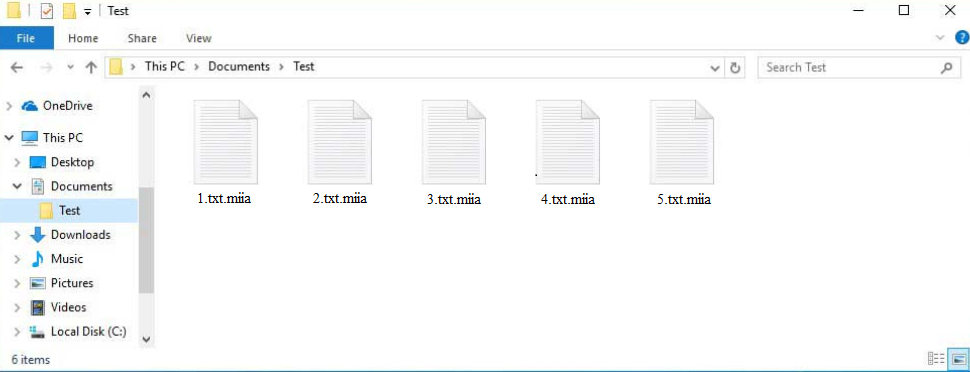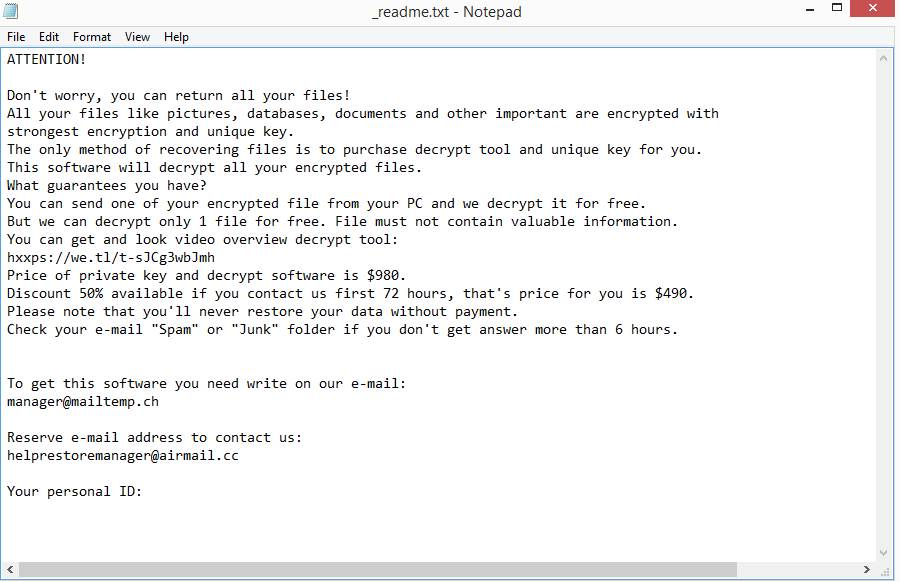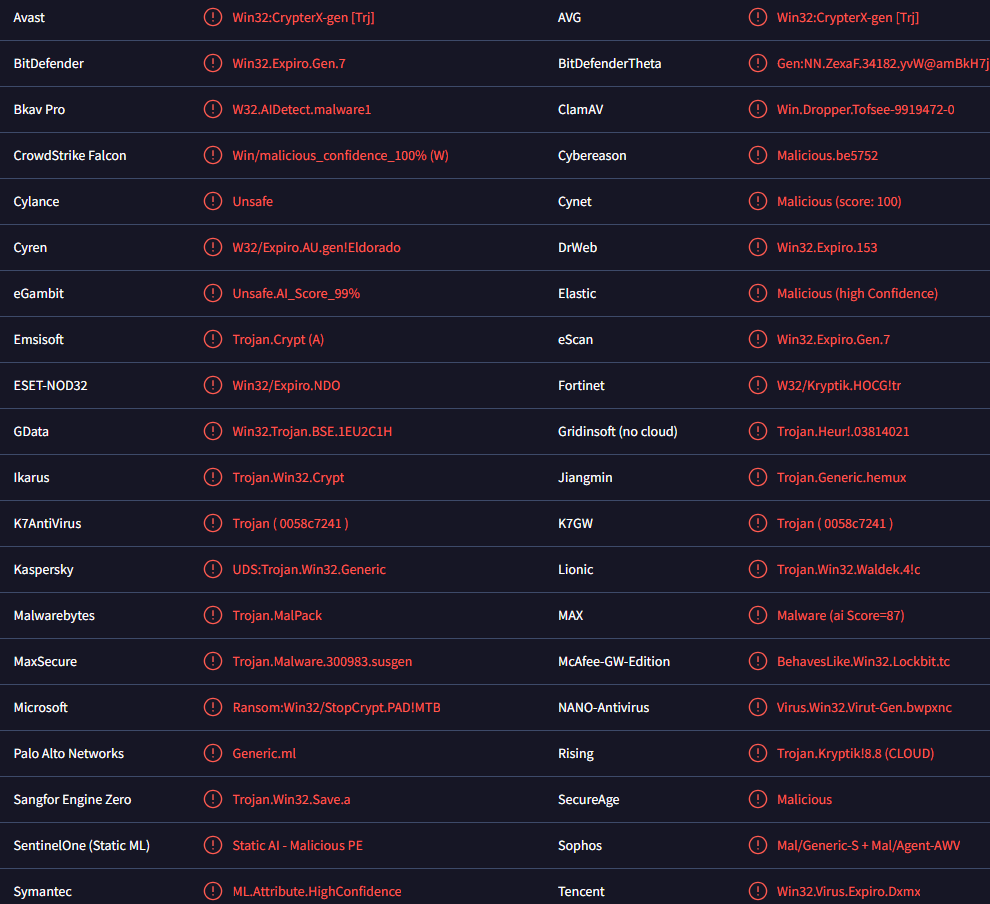How to remove Miia ransomware
Miia ransomware is file-encrypting malware. This malware comes from the Djvu/STOP ransomware family and can be identified by the .miia extension added to encrypted file names. The malware targets personal files, encrypts them, and demands payment for their recovery. A free Miia ransomware decryptor is currently not available, and only users with backups can recover files for free at the moment.
When you initiate a malicious file on your computer, the ransomware begins encrypting files immediately. Its main targets are personal files such as documents, videos, and photos. All encrypted files will have the .miia extension so they are easy to identify. For example, 1.txt would become 1.txt.miia if encrypted. Files with the extension will not be openable unless you first decrypt them.
When the encryption process is finished, you will find a _readme.txt ransom note in folders that have encrypted files. The note contains instructions on how victims can recover files. Unfortunately, getting the decryptor requires paying $980. There’s supposedly a 50% discount for users who make contact within the first 72 hours. Malicious actors also promise to decrypt one file for free as long as it does not contain any important information.
Paying to get the decryptor may seem like a good idea if you don’t have backup, but it’s not recommended. Considering you are dealing with cybercriminals, you are not guaranteed a decryptor because the malicious actors will not necessarily send it. They are unlikely to feel any kind of obligation to help victims considering they encrypted victims’ files in the first place.
Below is the full _readme.txt ransom note:
ATTENTION!
Don’t worry, you can return all your files!
All your files like pictures, databases, documents and other important are encrypted with strongest encryption and unique key.
The only method of recovering files is to purchase decrypt tool and unique key for you.
This software will decrypt all your encrypted files.
What guarantees you have?
You can send one of your encrypted file from your PC and we decrypt it for free.
But we can decrypt only 1 file for free. File must not contain valuable information.
You can get and look video overview decrypt tool:
hxxps://we.tl/t-sJCg3wbJmh
Price of private key and decrypt software is $980.
Discount 50% available if you contact us first 72 hours, that’s price for you is $490.
Please note that you’ll never restore your data without payment.
Check your e-mail “Spam” or “Junk” folder if you don’t get answer more than 6 hours.To get this software you need write on our e-mail:
manager@mailtemp.chReserve e-mail address to contact us:
helprestoremanager@airmail.ccYour personal ID:
If you have a backup, you can start file recovery as soon as you remove Miia ransomware from your computer. Make sure to use an anti-virus program to delete Miia ransomware because it’s a complex infection. When the ransomware is no longer present on the computer, you can safely connect to your backup.
How did ransomware infect your computer?
Users can infect their computers in a variety of ways. It usually happens due to users’ poor browsing habits because users engage in risky behavior. Developing better habits and familiarizing oneself with the most common malware distribution methods is an effective way to avoid malware infection in the future.
Malware can be commonly distributed via email attachments. If your email address has been leaked or stolen during a data breach, you will eventually receive malicious emails. Malware-carrying emails can be disguised as parcel delivery notifications or order confirmations. By claiming that the attachments are important files, malicious senders pressure users into opening the attachment. Fortunately for users, mass malicious emails are usually obvious and fairly easy to identify. One of the most obvious signs is grammar/spelling mistakes. You would not see such mistakes in legitimate emails, particularly automatic ones, because they look very unprofessional.
When inspecting an email, take note of how it addresses you. If the sender is someone who should know your name (e.g. a company whose service you use) but they address you using generic words like “User”, “Member”, “Customer”, etc., you may be dealing with either spam or a malicious email. Cybercriminals target many users with the same email so they use generic language. They also usually do not have access to personal information.
Malicious emails would be significantly more sophisticated when the target is someone specific. They would not have any mistakes and contain certain information to give the email more credibility. Thus, it’s recommended to scan all unsolicited email attachments with anti-virus software or VirusTotal before opening them.
Torrents are also a common malware distribution method. A lot of torrent sites are poorly moderated, which allows malicious actors to upload torrents with malware in them. It’s especially common to find malware in torrents for entertainment content, such as movies, TV series, or video games. If you choose to pirate copyrighted content, keep in mind that you’re not only stealing but also endangering your computer/data.
How to remove Miia ransomware
Ransomware is a very complex infection, thus it’s recommended to use anti-malware software to remove Miia ransomware. Unless you know exactly what to do, manual Miia ransomware removal could result in more damage to your computer. When the anti-malware program no longer detects Miia ransomware, you can safely connect to your backup and start recovering files.
Can I recover Miia ransomware-encrypted files for free?
If you have a backup, you can recover files for free. However, users with no backups do not have this option. Users’ only option is to wait for a free Miia ransomware decryptor to be released. It’s not currently available but it may be released sometime in the future. If it does get released, you will be able to find it on NoMoreRansom.
Site Disclaimer
WiperSoft.com is not sponsored, affiliated, linked to or owned by malware developers or distributors that are referred to in this article. The article does NOT endorse or promote malicious programs. The intention behind it is to present useful information that will help users to detect and eliminate malware from their computer by using WiperSoft and/or the manual removal guide.
The article should only be used for educational purposes. If you follow the instructions provided in the article, you agree to be bound by this disclaimer. We do not guarantee that the article will aid you in completely removing the malware from your PC. Malicious programs are constantly developing, which is why it is not always easy or possible to clean the computer by using only the manual removal guide.


